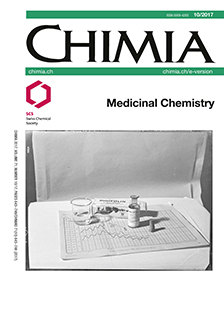The Screening Compound Collection: A Key Asset for Drug Discovery
DOI:
https://doi.org/10.2533/chimia.2017.667Keywords:
Compound library committee (clc), Screening compound collection, Screening compound selection process, Virtual tnt-libraryAbstract
In this case study on an essential instrument of modern drug discovery, we summarize our successful efforts in the last four years toward enhancing the Actelion screening compound collection. A key organizational step was the establishment of the Compound Library Committee (CLC) in September 2013. This cross-functional team consisting of computational scientists, medicinal chemists and a biologist was endowed with a significant annual budget for regular new compound purchases. Based on an initial library analysis performed in 2013, the CLC developed a New Library Strategy. The established continuous library turn-over mode, and the screening library size of 300'000 compounds were maintained, while the structural library quality was increased. This was achieved by shifting the selection criteria from 'druglike' to 'leadlike' structures, enriching for non-flat structures, aiming for compound novelty, and increasing the ratio of higher cost 'Premium Compounds'. Novel chemical space was gained by adding natural compounds, macrocycles, designed and focused libraries to the collection, and through mutual exchanges of proprietary compounds with agrochemical companies. A comparative analysis in 2016 provided evidence for the positive impact of these measures. Screening the improved library has provided several highly promising hits, including a macrocyclic compound, that are currently followed up in different Hit-to-Lead and Lead Optimization programs. It is important to state that the goal of the CLC was not to achieve higher HTS hit rates, but to increase the chances of identified hits to serve as the basis of successful early drug discovery programs. The experience gathered so far legitimates the New Library Strategy.Downloads
Published
2017-10-25
Issue
Section
Scientific Articles
License
Copyright (c) 2017 Swiss Chemical Society

This work is licensed under a Creative Commons Attribution-NonCommercial 4.0 International License.
How to Cite
[1]
C. Boss, J. Hazemann, T. Kimmerlin, M. von Korff, U. Lüthi, O. Peter, T. Sander, R. Siegrist, Chimia 2017, 71, 667, DOI: 10.2533/chimia.2017.667.







